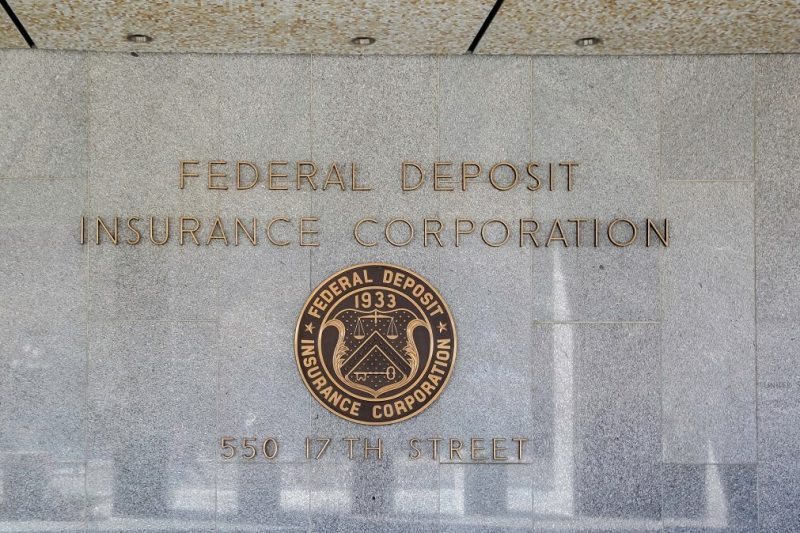Source: AdobeStock / JHVEPhoto
The Federal Deposit Insurance Corporation (FDIC) has recently implemented a new rule governing the use of its official signs and advertising, potentially influencing public perception of certain crypto firms.
The FDIC announced on December 20 that its board of directors has finalized regulations aimed at addressing false advertising, misrepresentations of deposit insurance coverage, and the misuse of the FDIC’s name or logo.
From 2025 onwards, institutions insured by the FDIC will be required to display a black and navy blue sign, replacing the gold and black sign that has been in use since the 1930s.
This rule applies to websites, apps, brick-and-mortar bank locations, and specific ATMs.
The FDIC stated that the last significant update to its sign and advertising rules was in 2006.
The purpose of this update is to prevent entities from potentially misleading customers by falsely claiming that their funds are FDIC-insured.
FDIC’s New Rule Prompted By Abuse in Crypto
While the new rule is not limited to the crypto industry, it has been prompted by widespread abuse within the crypto sector.
“While the rule finalized today isn’t limited to the crypto industry, abuse by crypto has been rampant, forcing the FDIC to take multiple actions to stop it,” said Dennis Kelleher, president and CEO and of nonprofit organization Better Markets.
“Investors were misled by Gemini Earn, FTX US, Voyager Digital, and other crypto firms into believing their investments were FDIC insured. We applaud the FDIC’s action to update and strengthen the rules to address this misconduct.”
In 2023, a number of banks associated with crypto firms faced closures, regulatory intervention, or voluntary liquidation, sparking discussions among lawmakers about protecting user funds.
The FDIC collaborated with the New York State Department of Financial Services to close Signature Bank.
Silicon Valley Bank, which held deposits from stablecoin issuer Circle and venture capital firm Sequoia Capital, also collapsed in March and fell under FDIC protection.
Generally, the FDIC insures deposits up to $250,000 per depositor.
Highlighting the potential risks associated with crypto transactions, the Consumer Financial Protection Bureau issued a warning in June that payment apps facilitating crypto transactions might not necessarily be FDIC-insured, thereby putting funds at risk.
The FDIC has recognized crypto activities as “novel and complex risks” for U.S. banks due to their uncertain legal and regulatory status.
The updated sign and ad rules from the FDIC aim to address these challenges and ensure greater transparency for consumers and investors in the crypto industry.
As reported, more than 40 countries have made significant strides in advancing crypto-focused regulations and legislation this year, indicating a growing global trend towards wider cryptocurrency adoption.
These countries have undertaken various initiatives to develop regulations and legislation specifically tailored to the cryptocurrency industry.
The post FDIC’s Sign and Ad Rules Update May Impact Crypto Industry – Here’s How appeared first on Cryptonews.






